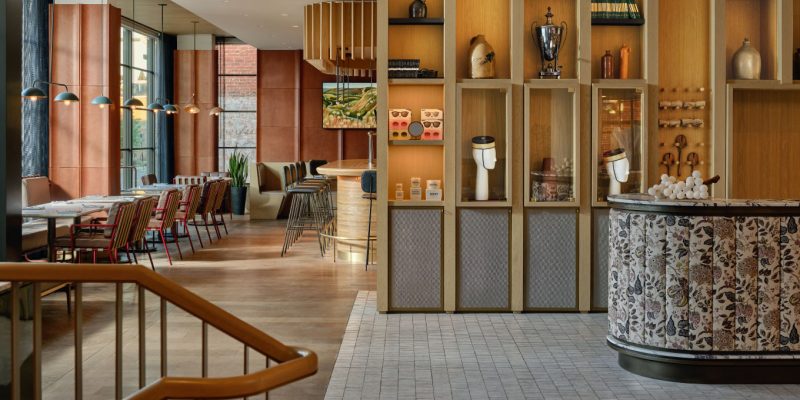Travel
Rio de Janeiro: Black Book Travel Guide
Immerse yourself in all things Rio de Janeiro, from dining on local fare, lounging on the pristine white sands of Copacabana beach to up-all-night dancing in Lapa.
by : Noah Lehava- Feb 28th, 2013

Rio de Janeiro — the Marvelous City– is just that. Its pulsating energy emanates from its
white sand beaches and awe-inspiring views. Bask in the city’s beauty from atop by visiting Christ the Redeemer or from the colourful favelas. Explore traditional Brazilian culture, fresh food,
luxury accommodation at the famous Copacabana beach and sizzling nightlife when you step onto the cobblestone streets of Lapa.
RIO DE JANEIRO TRAVEL GUIDE: WHERE TO STAY
Built in the early 1920s, this vast art-deco hotel is set right in front of the world famous beach that bares the same name. The grand hotel, with its glistening white façade, has been a stomping ground to royalty for decades. Its continuous excellence in luxury, from the pool to 5-star cuisine, has made it a true landmark – perfect for people watching (famous guests include Madonna, Princess Diana and Michael Jackson) and sipping frosty cocktails.
Located in the heart of Ipanema –Rio’s most desirable address—Fasano’s modern yet traditional design makes it a must-stay for the rich and famous (Owen Wilson is known to stay in this hotspot). Fasano al Mare, the lobby-level restaurant, dishes out decadent Italian cuisine while the sexy rooftop pool, only accessible to hotel guests, overlooks the stunning beaches of Ipanema and Corcovado. Private beach cabanas add to the allure of staying at this exclusive hotel (picture yourself sitting in the shade with a wide-brimmed hat, Caipirinha in hand).
RIO DE JANEIRO TRAVEL GUIDE:
WHAT TO EAT
Acai berry smoothie
This tiny purple superfruit that has been on every healthy eating guide the past few years, grows deep in the Amazon jungle of Brazil. Beauty-wise, it’s known to be
packed with antioxidants that help prevent aging. This sweet berry ripens too quickly for transport (you’ve only indulged in the flash-frozen variety), so an added treat is enjoying it fresh from its local environment. Look for a small kiosk with hanging fruit and you’re sure to find Acai berry smoothie on the menu. Topped with granola or fresh tropical fruit, this deep-violet smoothie will keep you cool in the searing Brazilian heat.
See all the beauty of Rio de Janeiro in our photographic travel guide.
More traditional Brazilian cuisine plus what to see and do in Rio de Janeiro on the next page…

Caipirinha
A traditional Brazilian cocktail made of freshly squeezed lime juice, a few heaps of sugar, and more cachaça than you can handle. Cachaça, Brazil’s local liquor, has a similar taste to tequila. Take a spin on the classic by trying a Caiprifruta, a similar drink with an added
kick of tropical fruit. My personal favourite? The passion fruit.
Freijoada brasileira
Considered to be Brazil’s national dish, freijoada is an ancient Portuguese recipe comprised of rice, black beans and pork or beef. Check out Casa da Feijoada, which serves up the fare every day of the week, for a taste of local tradition.
Churrasco
Churrasco also known as a Brazilian BBQ, is more than just a meal, it’s an experience. Servers welding swords stacked with barbequed meats roam around tables slicing perfect cuts a la carte. An insider tip? Pace yourself, the best cuts of meat come out later in the evening. If you’re feeling audacious in your
epicurean adventures, try a churrasco specialty, chicken hearts. Our top pick to try a Brazilian barbeque? Porcão Rio’s –consistently cited as the best churrascarias in town is a must-visit.
See all the beauty of Rio de Janeiro in our photographic travel guide.
Explore the picturesque landscape of Rio de Janeiro in these amazing hot-spots, all on the next page…

RIO DE JANEIRO TRAVEL GUIDE: WHAT TO SEE
Tourist hot-spots
While it may be hard to pry yourself away from the sandy beaches of Copacabana and Ipanema, this
bustling city has more than sun and sand to offer. Visit popular tourist must-sees like the Christ the Redeemer statue at the top of Corcovado and set your eyes on breathtaking views of the city. Ride a cable car high above the clouds to
Pão de Açúcar, also known as Sugar Loaf Mountains, and watch the amber skies in the horizon at sunset.
Off the beaten track
Once you’ve soaked in the beauty from afar, explore the centre of Rio’s culture: the favelas. A sharp contrast from the glitz of Rio, these communities are worth exploring to learn about the socioeconomic issues on the peripheral of Brazil’s second largest city. While some safety precautions should be considered before entering a favela, visiting one like Rocihna, Rio’s largest slum, has become a generally safe excursion. Pair up with a local tour guide to get an enlightened view into the true perils of the community, while embracing the vitality of the people within in. Weave through the
jigsaw of piled-high houses that exude an unparalleled character. After you bask in the
postcard views of Rio (the view from Rocihna is arguably the best in the city), support the community’s economy by sitting down and enjoying lunch at a local restaurant or purchasing some candies from a corner store.
Paraglide
Not for the faint of heart, glide off the edge of Pedra Bonita in a running start. A bird’s eye view of the
white sand beaches and turquoise waters below will have you wishing you could float for hours.
The can’t miss neighbourhood: Lapa
The heartbeat of the city, Lapa’s musically charged streets are lined with watering holes vibrating with sounds of Brazil. Enter one of the many samba clubs and nightclubs that line the cobblestone streets. Under the aqueduct a live band plays Sambass music (be warned: you might find yourself in the arms of a samba-dancing Brazilian who will teach you the moves). Dance the night away.
Read more:
Travel guide: Rio de Janeiro in pictures
Newsletter
Join our mailing list for the latest and biggest in fashion trends, beauty, culture and celebrity.
Read Next

Beauty
Dyson Just Launched Its Most Intelligent Hair Dryer Yet
Get ready to upgrade your blowout game.
by : Lauren Knowles- Apr 25th, 2024

Fashion
Meredith Shaw and Penn Have Created a Plus-Size Summer Dress Collection That "Feels Like Candy"
Morning Show Host Meredith Shaw wants you to "see your summer" in this curated collection for sizes 14-32.
by : Allie Turner- Apr 25th, 2024

Culture
ELLE Escapes: Savannah
Where to go, stay, eat and drink in “the Hostess City of the South.”
by : ELLE- Apr 15th, 2024




